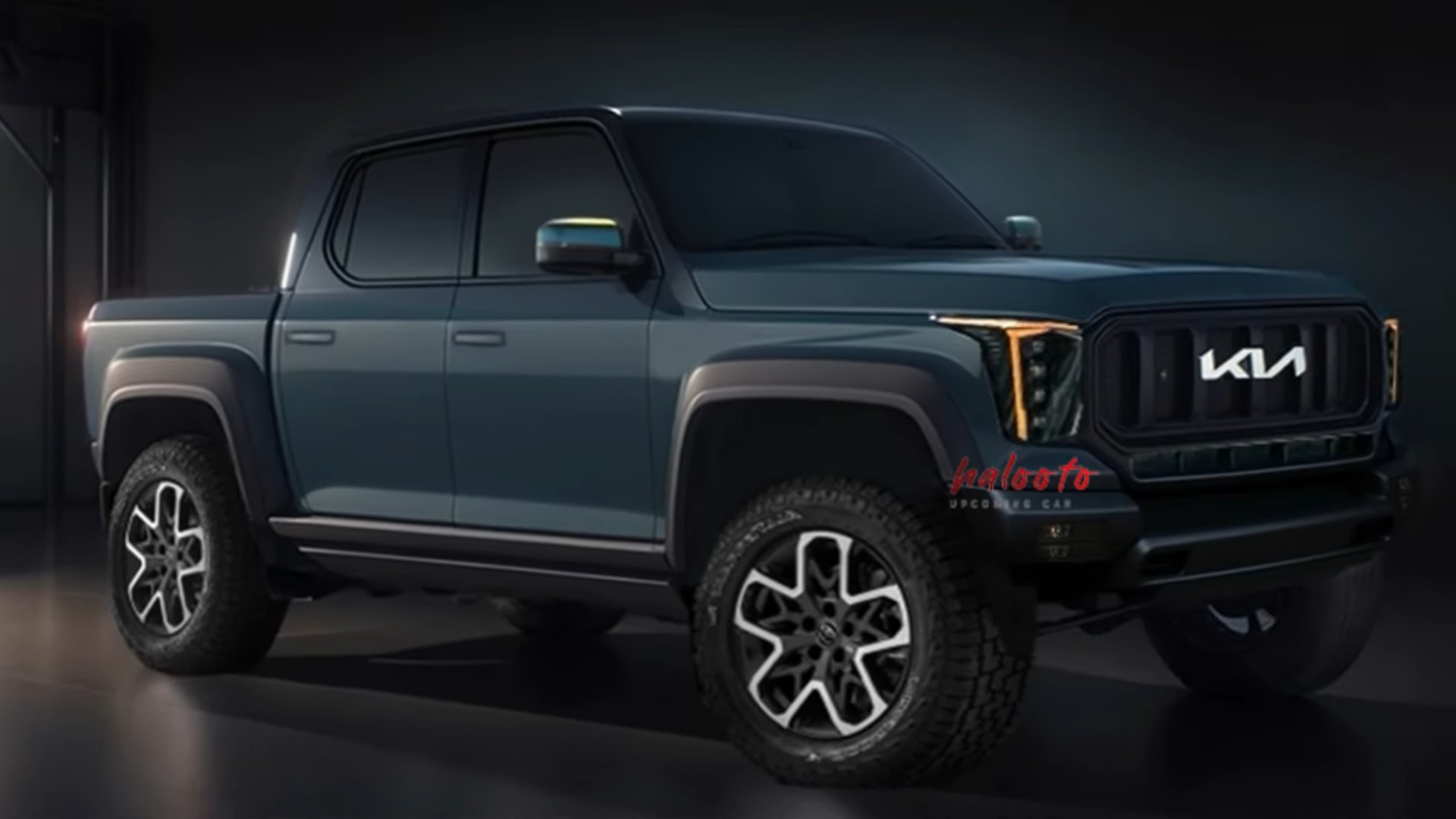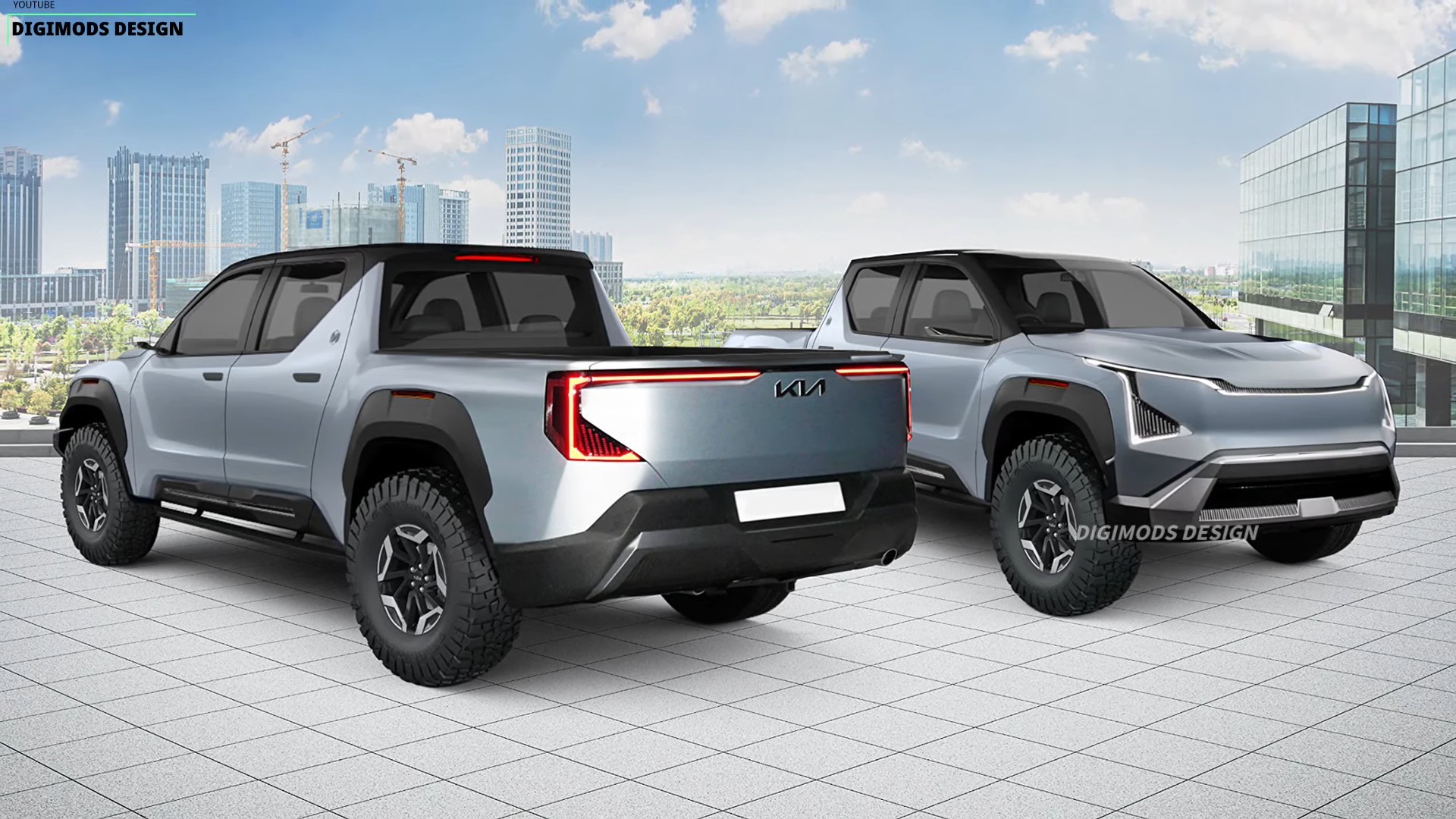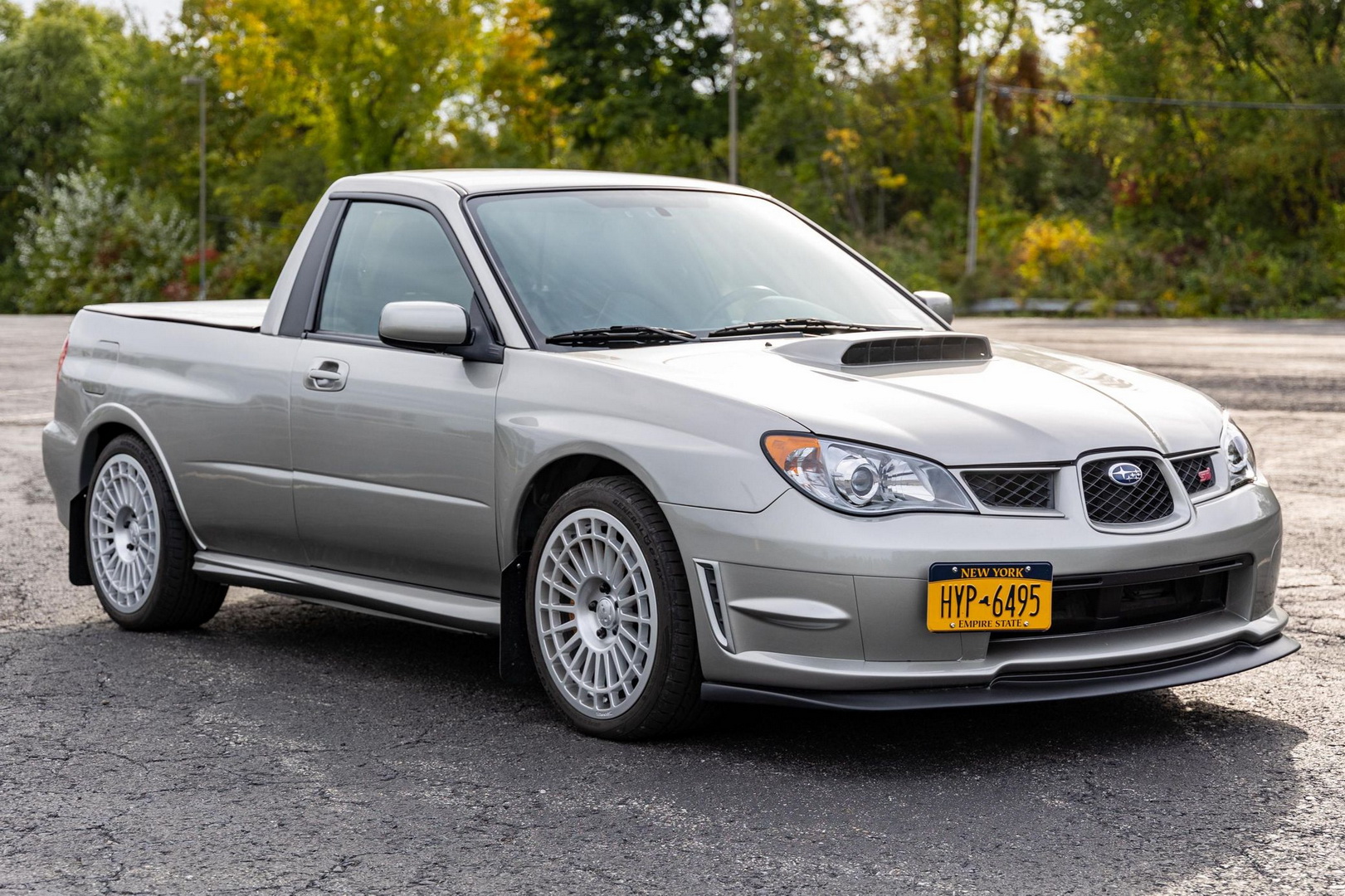Pickup Trucks Bed: The Heart of Utility and Versatility pickup.truckstrend.com
The pickup truck, an icon of American industry and a global workhorse, owes its enduring popularity to one fundamental component: its bed. Far more than just an open box, the pickup truck bed is the very essence of the vehicle’s utility, transforming a comfortable cabin into a versatile hauling machine. It’s the primary reason millions choose a pickup, whether for demanding commercial tasks, adventurous outdoor pursuits, or the simple convenience of transporting bulky household items. Understanding the nuances of the pickup truck bed – its design, dimensions, materials, and endless customization possibilities – is key to maximizing the potential of these remarkable vehicles. This comprehensive guide will delve into every aspect of the pickup truck bed, helping you appreciate its engineering and unlock its full capability.
Pickup Trucks Bed: The Heart of Utility and Versatility
I. Anatomy of a Pickup Truck Bed: Engineered for Purpose
At its core, a pickup truck bed is a cargo box designed to transport goods securely. However, its construction involves several key components, each engineered for durability and functionality:
- Floor: The primary load-bearing surface, designed to withstand significant weight and impact. It often features ribs or channels for strength and drainage.
- Sidewalls: These vertical panels enclose the cargo area, preventing items from falling out. They typically include stake pockets or attachment points for accessories.
- Tailgate: A hinged rear panel that lowers to facilitate loading and unloading. Modern tailgates often feature damping systems, power operation, or even integrated work surfaces and steps.
- Wheel Wells: Protrusions into the bed floor that accommodate the rear wheels. While necessary, they can sometimes impede the loading of wide, flat items.
- Cargo Hooks/Tie-Downs: Essential attachment points, usually located at the corners of the bed, for securing cargo with straps, ropes, or nets. Some modern trucks offer adjustable rail systems for greater flexibility.

The materials used in bed construction significantly impact durability and weight. Historically, steel has been the standard due to its strength and low cost. However, many contemporary trucks now feature aluminum beds, notably Ford’s F-150, chosen for its lighter weight, which improves fuel efficiency and increases payload capacity. While aluminum is more resistant to rust, it can be more susceptible to denting than steel. Some manufacturers also utilize composite materials, such as those found in the Honda Ridgeline or Toyota Tacoma, offering excellent dent and scratch resistance, corrosion proofing, and often integrated features like storage compartments.
II. Bed Sizes and Configurations: Tailoring to Your Needs
Pickup truck beds come in a variety of lengths, directly impacting their cargo capacity and the vehicle’s overall maneuverability. These sizes are generally categorized:

- Short Bed (typically 5 to 5.5 feet): Ideal for urban driving, easier parking, and those who prioritize passenger space (e.g., crew cabs). While less capable for very long items, it’s sufficient for most recreational gear, groceries, and common DIY supplies.
- Standard Bed (typically 6 to 6.5 feet): A popular compromise, offering a good balance between cargo capacity and maneuverability. It’s suitable for many professional tasks and can handle most standard-length lumber or equipment.
- Long Bed (typically 8 feet): The choice for serious hauling and commercial use. An 8-foot bed can accommodate full sheets of plywood, long pipes, and large appliances with the tailgate closed, making it indispensable for construction, agriculture, and heavy-duty transport.

The chosen bed length is often dictated by the cab configuration. Regular cabs usually pair with long beds, maximizing cargo space for single or two-person work crews. Extended cabs and crew cabs, designed to carry more passengers, typically offer short or standard beds, as the increased cabin length reduces the available frame length for the bed. Understanding this interplay is crucial when selecting a truck that balances passenger comfort with cargo requirements.
III. Maximizing Bed Utility: Accessories and Modifications
The true genius of the pickup truck bed lies in its adaptability, largely thanks to a vast aftermarket of accessories designed to enhance its utility, protection, and security.
- Bed Liners: Essential for protecting the bed’s floor and sidewalls from scratches, dents, and corrosion.
- Drop-in liners: Affordable, easy to install, but can trap moisture and debris underneath.
- Spray-in liners: More expensive but offer a custom fit, superior adhesion, and excellent protection, often enhancing grip for cargo.
- Tonneau Covers: These covers enclose the bed, protecting cargo from weather and theft, and can even improve fuel economy by reducing aerodynamic drag.
- Roll-up (soft or hard): Flexible and relatively inexpensive.
- Tri-fold (soft or hard): Easy to open and close, offering partial or full bed access.
- Retractable: Glide into a canister at the front of the bed, offering excellent security and ease of use.
- Hard Shell/Fiberglass: Most secure and weather-resistant, often color-matched to the truck, but can be heavy and limit full bed access.
- Bed Extenders/Dividers: Extend the usable length of the bed when the tailgate is down or help organize smaller items, preventing them from shifting.
- Cargo Management Systems: Integrated rail systems with movable cleats (e.g., Toyota’s Deck Rail System, Nissan’s Utili-track) allow for highly customizable tie-down points. Storage boxes, nets, and bags further aid organization.
- Tool Boxes: Crossover boxes sit across the bed behind the cab, while side-mount boxes fit along the bed rails, providing secure, weather-resistant storage for tools and equipment.
- Bed Racks/Ladder Racks: Essential for transporting oversized items like ladders, kayaks, or lumber that extend beyond the bed’s length, distributing weight over the cab and bed.
- Lighting: Aftermarket LED light strips or integrated bed lights illuminate the cargo area for easier loading and unloading in low light.
- Power Outlets: Many modern trucks offer 120V or 12V outlets in the bed, perfect for powering tools, camping equipment, or tailgating essentials.
IV. Practical Applications and Usage Tips
Mastering the use of your truck bed involves more than just throwing items in. Proper techniques ensure safety, prevent damage, and maximize efficiency.
- Loading Techniques: Always distribute weight evenly, especially heavier items, positioning them low and centered over the axle to maintain vehicle balance and handling.
- Securing Loads: This is paramount. Use high-quality tie-down straps, bungee cords, or cargo nets. Ensure straps are rated for the weight of your cargo and are properly tightened to prevent shifting during acceleration, braking, or turning. Over-tightening can damage fragile items.
- Payload Capacity: Understand your truck’s specific payload capacity (found on a sticker inside the driver’s door jamb). This is the maximum weight your truck can safely carry, including passengers, fuel, and cargo. Overloading compromises braking, handling, and can damage the vehicle’s suspension and drivetrain.
- Protecting the Bed: Beyond a liner, simple habits like placing cardboard or blankets under sharp or heavy objects can prevent localized damage. Clean the bed regularly to prevent rust, especially after hauling dirt, salt, or chemicals.
- Hauling Specific Items:
- Lumber/Pipes: For items longer than the bed, use a bed extender or a ladder rack. Secure the front and rear of the load.
- Furniture/Appliances: Use moving blankets to prevent scratches. Secure tightly to prevent shifting.
- ATVs/Motorcycles: Use ramps for loading and secure with multiple heavy-duty tie-downs at four points to prevent movement.
- Loose Materials (dirt, gravel): A bed liner is crucial. Consider a tarp to prevent spills over the sides.
V. Common Challenges and Solutions
Even with careful planning, challenges can arise when using a truck bed. Here are common issues and practical solutions:
- Cargo Shifting: The most common problem. Solution: Invest in a robust cargo management system, use multiple tie-down points, bed extenders that double as dividers, or even simple wooden braces.
- Weather Exposure: Rain, snow, and sun can damage unprotected cargo. Solution: A tonneau cover or a camper shell provides excellent weather protection. For open beds, tarps and bungee cords offer a temporary solution.
- Theft: Open beds are vulnerable. Solution: Lockable tonneau covers, secure toolboxes, and keeping valuable items out of sight or stored inside the cabin.
- Bed Damage: Scratches, dents, and rust from heavy use. Solution: A high-quality spray-in bed liner is the best defense. Regular cleaning and prompt touch-ups of any deep scratches can prevent rust.
- Limited Space for Specific Items: When an item is just a bit too long or bulky. Solution: A bed extender, roof rack, or specialized bed racks can extend hauling capability beyond the confines of the bed itself.
VI. Choosing the Right Bed for Your Needs
Selecting the ideal pickup truck bed configuration and accessories hinges on understanding your primary usage:
- Workhorse: If your truck is a dedicated work vehicle, prioritize a long bed for maximum capacity, a durable spray-in liner, and robust toolboxes/racks.
- Recreational: For adventurers, a standard or short bed might suffice, paired with a versatile tonneau cover for gear protection, and perhaps a bed rack for bikes or kayaks.
- Daily Driver/Occasional Hauler: A short bed in a crew cab offers passenger comfort and urban maneuverability, while a soft or tri-fold tonneau cover keeps occasional cargo secure and dry.
- Budget: Factor in the cost of essential accessories. While the truck itself is a significant investment, accessories can add hundreds or thousands to the total.
- Future Needs: Consider how your hauling requirements might evolve. It’s often easier (and more cost-effective) to start with a slightly larger bed or more robust accessories than to upgrade later.
Price Guide for Pickup Truck Bed Accessories (Estimated Ranges)
| Accessory Category | Description | Estimated Price Range (USD) | Notes |
|---|---|---|---|
| Bed Liners | |||
| Spray-In Bed Liner | Professionally applied, durable, custom fit. | $400 – $800+ | Varies by bed size, material (e.g., polyurea), and brand. |
| Drop-In Bed Liner | Pre-formed plastic insert. | $150 – $300 | Easier DIY installation, but can trap moisture and cause abrasion. |
| Tonneau Covers | |||
| Soft Roll-Up | Vinyl or fabric, rolls up manually. | $200 – $500 | Basic weather protection, less security. |
| Soft Tri-Fold | Vinyl or fabric, folds into sections. | $250 – $600 | More convenient access than roll-up. |
| Hard Tri-Fold | Aluminum or composite panels, folds into sections. | $700 – $1,200+ | Good security and weather protection. |
| Retractable | Aluminum or vinyl, retracts into a canister. | $900 – $2,000+ | Excellent security, sleek look, often power-operated options. |
| Fiberglass/Hard Shell (Painted) | One-piece, color-matched, most secure. | $1,500 – $3,000+ | Provides full enclosure, often includes lighting/liners. Limits full bed access without removal. |
| Cargo Management | |||
| Bed Extender | Flips out to extend bed length or inward as a divider. | $150 – $400 | Useful for longer items or organizing cargo. |
| Cargo Rails/Cleats System | Track system with adjustable tie-down cleats. | $200 – $600 | Varies greatly by truck model (some integrated from factory). |
| Cargo Net/Bars | Simple elastic nets or adjustable bars for securing smaller items. | $20 – $100 | Essential for preventing small items from shifting. |
| Tool Boxes | |||
| Crossover Tool Box | Sits across the bed behind the cab. | $200 – $800 | Aluminum or steel, various sizes and finishes. |
| Side-Mount Tool Box | Sits along the bed rail. | $150 – $500 (each) | Good for specific tools or smaller items, leaves bed floor clear. |
| Racks | |||
| Bed Rack / Ladder Rack | Mounts over the bed rails for carrying long items like ladders, lumber, kayaks. | $300 – $1,500+ | Varies by material (steel, aluminum), capacity, and design (e.g., over-cab, adjustable). |
| Lighting/Power | |||
| LED Bed Lighting Kit | Aftermarket LED strips for illumination. | $30 – $150 | Improves visibility when loading/unloading in the dark. |
| In-Bed Power Outlet (DIY/Accessory) | Adds a 12V or 120V outlet to the bed. | $50 – $200+ (kit) | Useful for powering tools, camping gear. Some trucks have factory options. |
Note: Prices are estimates and can vary significantly based on brand, material quality, specific vehicle model, installation complexity, and regional market conditions. Professional installation fees are often separate.
Frequently Asked Questions (FAQ)
Q1: What is "payload capacity" and why is it important?
A1: Payload capacity is the maximum amount of weight your truck can safely carry, including passengers, fuel, and cargo. It’s crucial because exceeding this limit can compromise braking, handling, accelerate wear and tear on components (tires, suspension, brakes), and even void your warranty or be illegal. Always check your truck’s specific payload rating on the sticker inside the driver’s side door jamb.
Q2: Can I put a camper shell on any truck bed?
A2: Camper shells (also known as truck caps or toppers) are typically designed for specific truck makes, models, and bed lengths. While some universal models exist, a proper fit ensures weather sealing, security, and aesthetics. Always verify compatibility with your truck’s exact specifications.
Q3: What’s the main difference between a short bed and a long bed?
A3: The main difference is cargo capacity and vehicle length. A short bed (approx. 5-5.5 ft) is easier to maneuver and park, often paired with crew cabs for more passenger room. A long bed (approx. 8 ft) offers maximum cargo space, ideal for full sheets of plywood or long lumber, but makes the truck longer and less agile.
Q4: Are spray-in bed liners truly better than drop-in liners?
A4: Generally, yes. Spray-in liners offer a permanent, seamless bond to the bed, preventing moisture and debris from getting underneath (which can cause rust with drop-ins). They also provide superior grip, dent protection, and a custom, integrated look. Drop-in liners are cheaper and easier to install but can vibrate, scratch the original paint underneath, and offer less grip.
Q5: Do tonneau covers really save gas?
A5: The fuel economy benefits of tonneau covers are often debated and can be minimal, typically a 1-2% improvement at best. While they reduce aerodynamic drag in the bed, the "air bubble" effect often cited is less significant than the overall drag of the truck itself. The primary benefits are cargo security, weather protection, and aesthetics.
Q6: How do I properly secure large, heavy items like an ATV or refrigerator in my truck bed?
A6: For large, heavy items, use multiple heavy-duty ratchet straps. For an ATV, use at least four straps (one on each corner), ensuring they are rated for the weight and pulled taut. For a refrigerator or similar appliance, use straps over the top and around the base, securing them to strong tie-down points. Consider using a bed mat or rubberized liner to prevent sliding, and if possible, position the heaviest part of the item over or slightly forward of the rear axle for optimal weight distribution.
Conclusion: The Enduring Utility of the Pickup Truck Bed
The pickup truck bed, in all its iterations, remains the quintessential feature that defines the pickup truck. From its robust construction to the endless array of accessories, it’s a testament to practical engineering and adaptable design. Whether you’re a tradesperson hauling tools, a weekend warrior transporting gear, or a homeowner tackling a DIY project, the bed provides the unparalleled utility that no other vehicle can match. By understanding its capabilities, protecting its integrity, and leveraging the right accessories, you can unlock the full potential of your pickup, making it an indispensable tool for work, recreation, and everything in between. The pickup truck bed isn’t just a space; it’s a promise of versatility and a canvas for endless possibilities.


